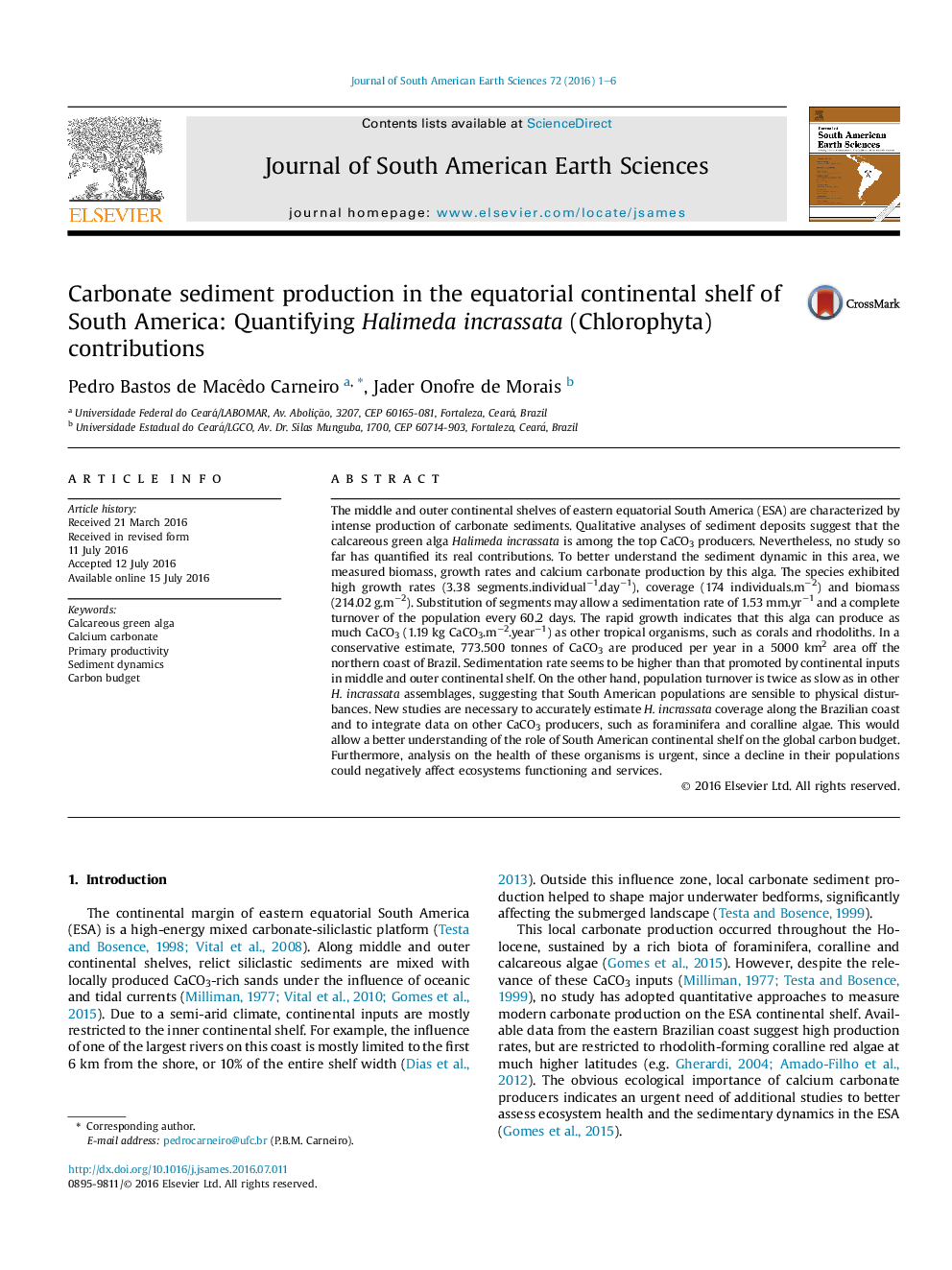| کد مقاله | کد نشریه | سال انتشار | مقاله انگلیسی | نسخه تمام متن |
|---|---|---|---|---|
| 4681948 | 1635138 | 2016 | 6 صفحه PDF | دانلود رایگان |

• First survey on CaCO3 production by a green alga on the Brazilian continental shelf.
• Halimeda incrassata produces as much CaCO3 as corals and rodoliths per unit of area.
• The sediments produced by this alga may accumulate at rates of 1.53 mm.yr−1
• Halimeda incrassata from Brazil seems to be sensible to physical stresses.
The middle and outer continental shelves of eastern equatorial South America (ESA) are characterized by intense production of carbonate sediments. Qualitative analyses of sediment deposits suggest that the calcareous green alga Halimeda incrassata is among the top CaCO3 producers. Nevertheless, no study so far has quantified its real contributions. To better understand the sediment dynamic in this area, we measured biomass, growth rates and calcium carbonate production by this alga. The species exhibited high growth rates (3.38 segments.individual−1.day−1), coverage (174 individuals.m−2) and biomass (214.02 g.m−2). Substitution of segments may allow a sedimentation rate of 1.53 mm.yr−1 and a complete turnover of the population every 60.2 days. The rapid growth indicates that this alga can produce as much CaCO3 (1.19 kg CaCO3.m−2.year−1) as other tropical organisms, such as corals and rhodoliths. In a conservative estimate, 773.500 tonnes of CaCO3 are produced per year in a 5000 km2 area off the northern coast of Brazil. Sedimentation rate seems to be higher than that promoted by continental inputs in middle and outer continental shelf. On the other hand, population turnover is twice as slow as in other H. incrassata assemblages, suggesting that South American populations are sensible to physical disturbances. New studies are necessary to accurately estimate H. incrassata coverage along the Brazilian coast and to integrate data on other CaCO3 producers, such as foraminifera and coralline algae. This would allow a better understanding of the role of South American continental shelf on the global carbon budget. Furthermore, analysis on the health of these organisms is urgent, since a decline in their populations could negatively affect ecosystems functioning and services.
Journal: Journal of South American Earth Sciences - Volume 72, December 2016, Pages 1–6